In an era of planned obsolescence and rapid technological turnover, vehicles that can cross the million-mile threshold represent extraordinary engineering achievements.
These mechanical marathoners demonstrate robust design and build quality and speak to the dedication of owners who maintain them through decades of service. While the average vehicle lifespan in America hovers around 12 years and 150,000 miles, these exceptional models routinely defy those expectations, often by multiples.
What separates these million-mile champions from their shorter-lived counterparts isn’t merely good fortune, but rather a combination of overbuilt components, mechanical simplicity, serviceability, and design philosophies that prioritize longevity over cutting-edge features.
Manufacturers who have consistently produced vehicles capable of reaching this milestone have typically emphasized durability as a core value, often at the expense of offering the latest technological innovations or maximizing short-term profits.
The following twelve models have demonstrated remarkable staying power, with numerous documented examples reaching or exceeding the million-mile mark.
From commercial workhorses to family sedans, these vehicles span different segments but share common traits of reliability, maintainability, and exceptional durability. Their stories serve as testaments to what’s possible when automotive design prioritizes longevity and quality over planned replacement cycles.
1. Toyota Hilux
The Toyota Hilux has earned legendary status as perhaps the most indestructible vehicle ever manufactured. This midsize pickup truck, introduced in 1968 and sold in the US as the Toyota Pickup or Tacoma until 1995, has been the subject of extreme durability tests that include being submerged in the ocean, set on fire, and dropped from cranes only to be revived and driven away afterward.
What makes the Hilux exceptional is its remarkably simple mechanical design coupled with Toyota’s fanatical attention to component durability. Early models featured the virtually indestructible 22R and 22R-E four-cylinder engines, known for continuing to run even with minimal maintenance.
These engines utilize a timing chain rather than a belt, eliminating a common failure point in many vehicles. The straightforward engine design means fewer components that can fail and easier access for repairs when necessary.
The Hilux’s body-on-frame construction allows for significant flex without structural damage, while its suspension system was overbuilt to handle punishing conditions from African deserts to Arctic tundras.
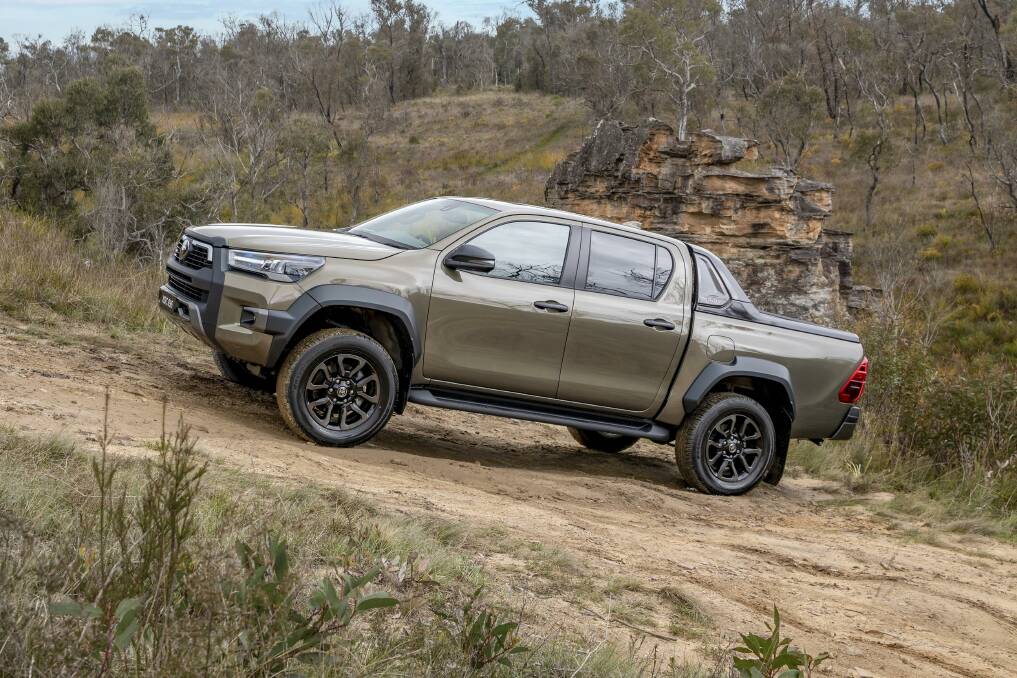
This robust foundation, combined with manual transmissions known for their simplicity and durability, creates a vehicle that routinely crosses the million-mile threshold in commercial use.
Particularly notable is the Hilux’s global reputation in developing nations, where parts availability and repair simplicity are paramount. In regions with limited infrastructure, these trucks often serve for decades as essential transportation and commercial vehicles.
The model’s longevity is so renowned that it has significantly influenced Toyota’s brand identity, with the company highlighting durability in its marketing worldwide.
A 2007 Hilux owned by Slovenian driver Igor Mazic has documented over 1,000,000 miles on its original engine and transmission, while countless others have crossed this threshold in commercial fleets across Africa, Australia, and the Middle East.
The truck’s legendary status was cemented when Top Gear’s unsuccessful attempts to destroy one became one of the show’s most famous segments, demonstrating why this pickup has become synonymous with automotive invincibility.
2. Mercedes-Benz W123
The Mercedes-Benz W123 series, produced from 1976 to 1985, represents the pinnacle of the company’s engineering-first philosophy before the cost-cutting era of the 1990s.
Often described as “over-engineered,” these sedans, coupes, and wagons were designed with seemingly limitless durability as a primary goal, with cost considerations secondary to quality.
At the heart of the million-mile W123s is typically the OM617 five-cylinder diesel engine, an incredibly robust powerplant that delivers modest performance (67-88 horsepower depending on configuration) but extraordinary longevity.
These engines feature a cast iron block with an aluminum head, seven main bearings for crankshaft stability, and indirect injection systems that prioritize reliability over power. While lacking in acceleration, these engines operate at lower stress levels than their gasoline counterparts, significantly reducing wear over time.
The W123’s body construction set new standards for durability, with galvanized steel panels that resist corrosion far better than contemporaries. Mercedes used nearly 30 pounds of grease to coat body cavities during manufacture an expensive process that dramatically extended the vehicle’s lifespan in harsh climates.
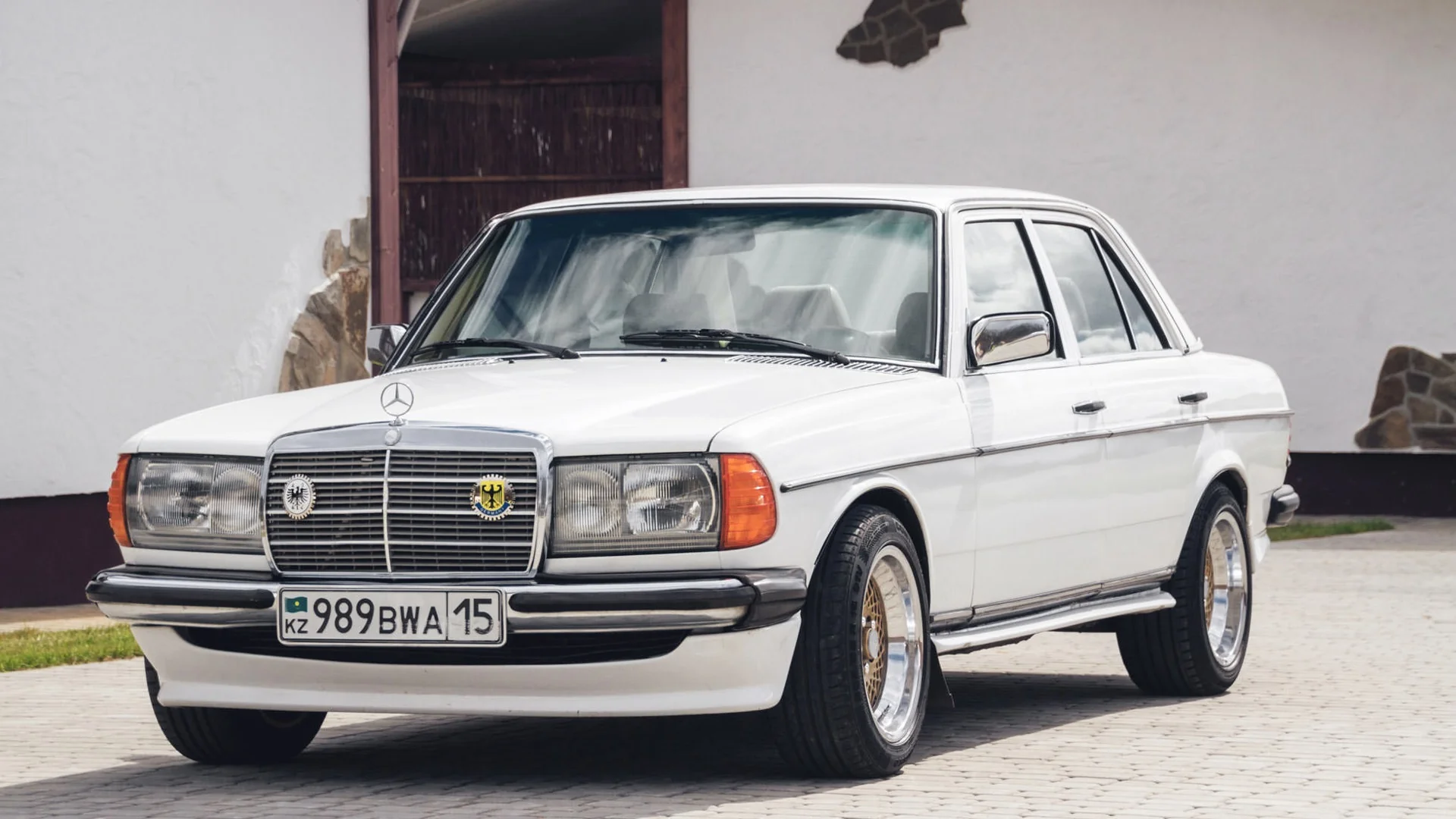
The interior materials were similarly chosen for longevity, with MB-Tex vinyl upholstery that often outlasts leather and climate control systems that continue functioning after four decades.
The model’s suspension and drivetrain components were significantly overbuilt, with many parts designed to last the life of the vehicle with proper maintenance.
The transmission, particularly the four-speed automatic, was engineered to handle far more power than the modest diesel engines produced, resulting in exceptional durability. Maintenance access was carefully considered, with excellent component accessibility that encouraged regular servicing.
Greek taxi driver Gregorios Sachinidis achieved 2.8 million miles in his 1976 240D before Mercedes-Benz bought the vehicle for their museum. In the United States, numerous examples have surpassed one million miles, including a 300D owned by California resident Curt Thorpe with 1.2 million documented miles.
These vehicles have proven particularly popular in developing nations precisely because of their ability to provide decades of service with basic maintenance, often becoming family heirlooms passed through generations.
3. Volvo P1800
The Volvo P1800, a stylish sports coupe produced from 1961 to 1973, holds the Guinness World Record for highest mileage on a non-commercial original-owner vehicle.
This record belongs to Irv Gordon’s 1966 P1800, which surpassed 3 million miles before Gordon’s passing in 2018 an achievement that represents the pinnacle of automotive longevity.
What enabled Gordon’s P1800 to achieve such remarkable longevity was a combination of Volvo’s engineering philosophy and Gordon’s meticulous maintenance regimen.
The P1800 features the B18/B20 engine series, an inline four-cylinder design that prioritizes durability through robust internal components, including five main bearings supporting the crankshaft unusual for four-cylinder engines of the era. This “overbuilt” approach resulted in engines that could withstand decades of constant use with proper care.
Unlike many sports cars designed primarily for style or performance, the P1800 embodied Volvo’s safety-first engineering ethos. Its body structure utilized thicker gauge steel than competitors, and its electrical systems were designed with redundancy and serviceability in mind.
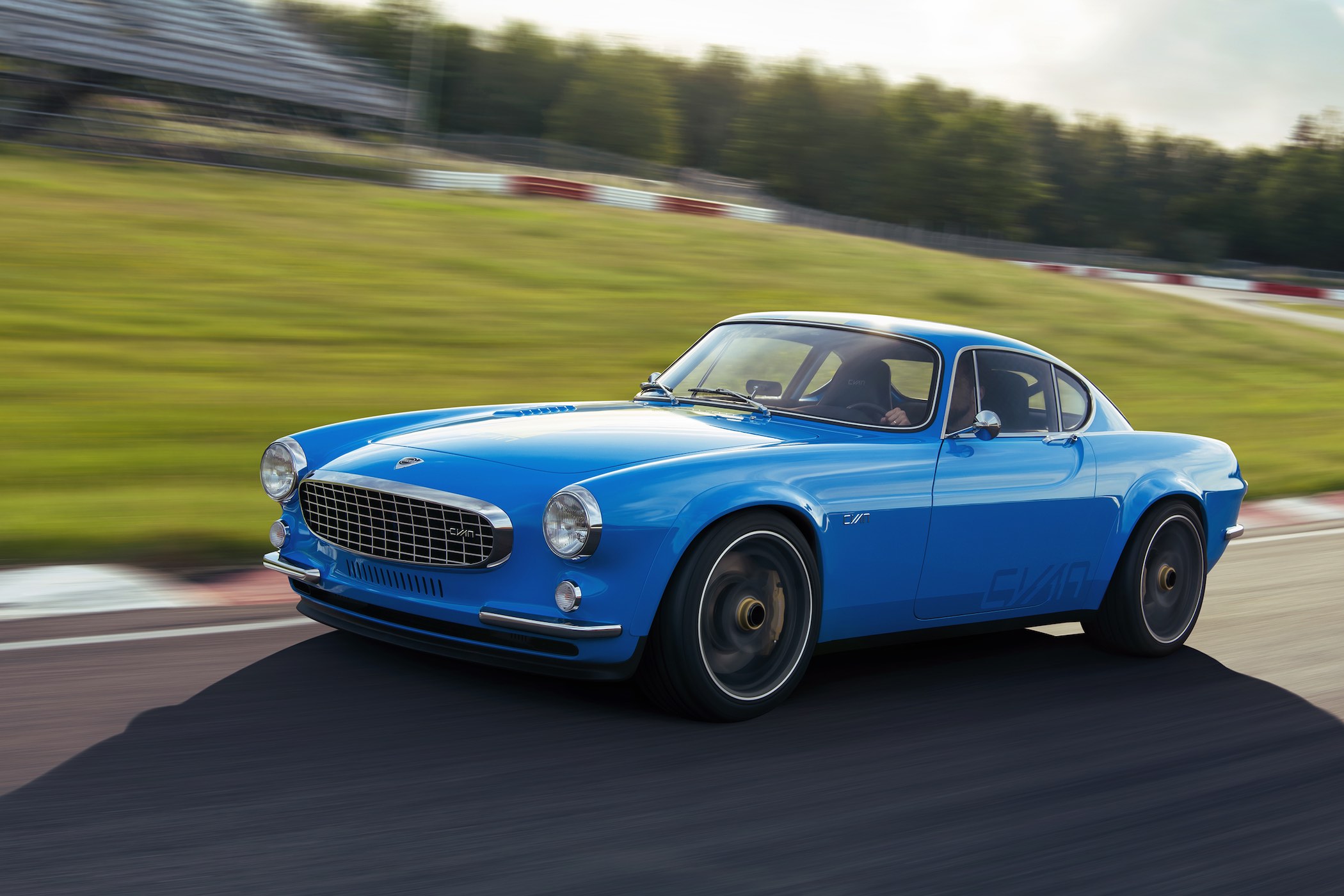
The car’s design avoided the cutting-edge technology of the day in favor of proven, reliable components that could be easily maintained by owners.
The P1800’s longevity potential is further enhanced by its mechanical simplicity. With carbureted fuel delivery, points-style ignition, and straightforward four-speed manual transmission with overdrive, the car lacks the complex electronic systems that often limit the lifespan of modern vehicles.
Nearly every component can be rebuilt rather than replaced, allowing for indefinite service with proper maintenance. Gordon’s maintenance regimen was extraordinary but not extravagant.
He changed the oil every 3,000-3,500 miles using conventional motor oil, replaced fluids at recommended intervals and addressed minor issues immediately before they could cascade into major problems.
He drove the car daily, eschewing the common practice of preserving classics through limited use, demonstrating that Volvo’s engineering could withstand constant service.
Other P1800 owners have achieved impressive mileage as well, with numerous examples exceeding 500,000 miles. While Gordon’s car remains the most famous high-mileage P1800, its longevity wasn’t an aberration but rather a demonstration of the model’s inherent durability when properly maintained.
The P1800’s million-mile potential helped cement Volvo’s reputation for building vehicles designed to last generations rather than just warranty periods.
4. Honda Accord
The Honda Accord, particularly generations produced from 1989 through 2002 (4th-6th generations), has consistently demonstrated exceptional longevity, with numerous documented examples exceeding one million miles.
This mainstream family sedan became a benchmark for reliability through Honda’s methodical engineering approach focused on continuous improvement rather than radical redesigns.
Central to the Accord’s durability is its F-series engine family, particularly the F22 2.2-liter four-cylinder. These engines utilize a non-interference design in many iterations, meaning that even if the timing belt fails, the pistons won’t collide with valves preventing catastrophic engine damage from a single component failure.
The engines feature precision manufacturing tolerances, excellent oiling systems, and cast iron cylinder liners in aluminum blocks that resist wear exceptionally well over hundreds of thousands of miles.
Honda’s transmission engineering during this period focused on simplicity and robustness. The manual transmissions from these generations are notably durable, while early automatic transmissions, though occasionally problematic, became increasingly reliable through incremental improvements.
The 5th generation (1994-1997) models with manual transmissions are particularly noted for powertrain longevity, with many examples requiring only routine maintenance well beyond 300,000 miles.
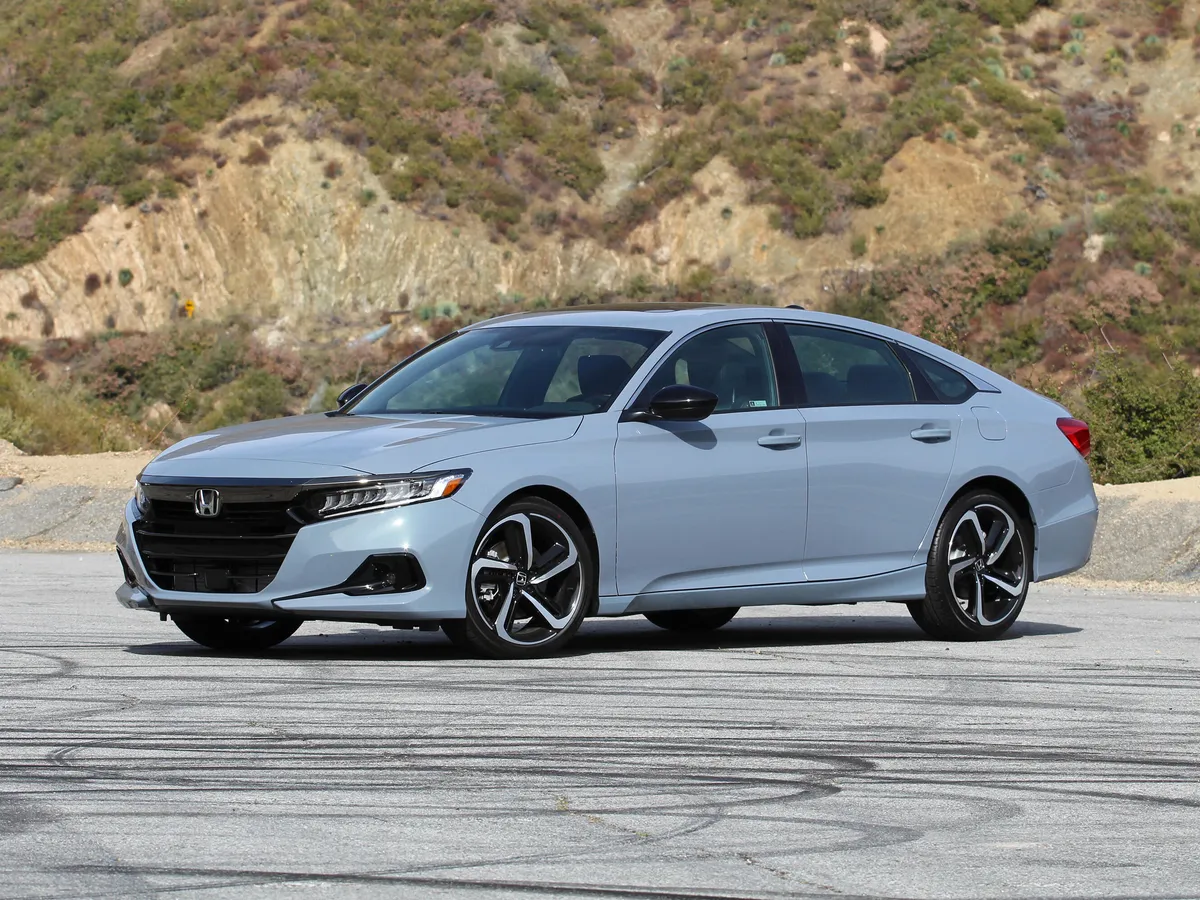
The Accord’s electrical system design represents a significant factor in its long-term reliability. Honda engineers prioritized weatherproofing connections, logical wiring layouts, and high-quality switches and sensors.
Unlike European competitors that often suffer electrical failures as they age, Accords typically maintain electrical system integrity well into high mileage, avoiding the cascade of unpredictable problems that render many vehicles economically unrepairable.
Beyond engineering, the Accord’s serviceability contributes significantly to its million-mile potential. Components requiring routine maintenance are easily accessible, encouraging owners to perform regular servicing.
The design philosophy emphasizes straightforward repairs that don’t require specialized tools or equipment, making these vehicles practical to maintain even as they age beyond dealer service networks.
Joe LoCicero’s 1990 Accord surpassed 1 million miles on its original engine and transmission, prompting Honda to celebrate with a parade and new Accord for the owner.
Maine-based automobile consultant Dexter Mills accumulated over 1.2 million miles on his 1990 Accord, demonstrating the model’s durability even in harsh northeastern conditions.
These aren’t isolated cases Honda’s internal data suggests thousands of Accords have surpassed 500,000 miles, with a significant percentage continuing well beyond that milestone with conscientious maintenance.
Also Read: 10 Cars With Engines That Outlive Their Bodies
5. Ford F-250/F-350 (7.3L PowerStroke Diesel)
The Ford F-250 and F-350 Super Duty trucks equipped with the 7.3L PowerStroke diesel engine (1994-2003) have earned legendary status among million-mile vehicles, particularly in commercial applications.
These heavy-duty pickups represent a unique convergence of timing and engineering that created what many consider the most durable modern diesel pickup platform ever produced.
The 7.3L PowerStroke diesel engine, manufactured by International Navistar for Ford, was designed during an era before strict emissions regulations fundamentally changed diesel engine design.
This timing allowed engineers to prioritize durability and simplicity over emissions control hardware that would later complicate diesel powertrains. The engine features a conservatively rated output (210-275 horsepower depending on the year), preventing the internal stress that plagues higher-output successors.
What truly distinguishes the 7.3L PowerStroke is its mechanical simplicity compared to modern diesel engines. It utilizes hydraulic-mechanical injection rather than complex electronic common-rail systems, features a fixed geometry turbocharger instead of variable geometry designs, and lacks exhaust gas recirculation systems that would later become mandatory. This simplicity translates directly to longevity, with fewer components that can fail and less interdependency between systems.

The engine block itself is extraordinarily robust, with a cast iron design featuring thicker cylinder walls than necessary for its rated output. The bottom end uses forged steel connecting rods and seven main bearings supporting forged crankshaft specifications more common in industrial applications than passenger vehicles.
This overbuilt design allows these engines to withstand decades of heavy use, including towing and commercial applications that quickly wear out lesser powertrains.
Complementing the PowerStroke’s durability is the robust E4OD/4R100 automatic transmission (when properly maintained) and the equally stout ZF5 and ZF6 manual transmissions.
The truck’s conventional leaf spring suspension, solid front axle (on 4WD models), and traditional body-on-frame construction all favor simplicity and repairability over complexity, further enhancing long-term durability.
Numerous documented examples exist of these trucks exceeding one million miles in commercial service. Indiana-based contractor Carl Kelley’s 1997 F-350 logged over 1.3 million miles on its original engine before being retired, while Minnesota-based Jason Cannon documented 1.6 million miles on a 1999 F-250 used in his delivery business.
Ford’s internal fleet data suggests that properly maintained 7.3L PowerStroke engines routinely exceed 500,000 miles without major repairs, with a significant percentage continuing well beyond the million-mile mark—a testament to engineering that prioritized durability over cutting-edge technology.
6. Toyota Land Cruiser
The Toyota Land Cruiser, particularly the 80 Series (1990-1997) and 100 Series (1998-2007) models, has consistently demonstrated million-mile potential across the globe’s most challenging environments.
This full-size SUV platform was designed with a fundamentally different philosophy than most consumer vehicles, prioritizing absolute reliability in remote locations where mechanical failure could have life-threatening consequences.
At the heart of the Land Cruiser’s extraordinary longevity is Toyota’s straight-six diesel and gasoline engines. The 1FZ-FE 4.5-liter gasoline engine and 1HZ/1HD-T/1HD-FTE diesel engines are notably overbuilt, operating well below their stress thresholds in normal use.
These engines feature seven main bearings supporting the crankshaft, cast iron blocks, and timing chains rather than belts. The diesel variants in particular are known for regularly exceeding one million kilometers without major repairs when properly maintained.
Beyond the powertrain, the Land Cruiser’s entire drivetrain is engineered for extreme durability. The transfer case utilizes metal gears rather than chains, the differentials feature larger-than-necessary components, and the transmission (particularly the A442F automatic) is designed to handle far more torque than the stock engines produce.
This approach creates substantial engineering headroom components operating well below their maximum capacity and experience dramatically less wear over time.

Toyota’s approach to electrical systems in these Land Cruisers also contributes significantly to their longevity. Rather than pursuing cutting-edge technology, Toyota engineered these systems with redundancy and simplicity, utilizing proven components and straightforward designs that resist environmental degradation.
Even in extreme desert heat or Arctic cold, Land Cruiser electrical systems typically remain functional decades after manufacture. The vehicle’s body structure represents another durability advantage, with thicker sheet metal than competitors and extensive corrosion protection.
The chassis design emphasizes repairability in remote locations, with bolted components that can be replaced rather than welded assemblies that require specialized equipment to repair. This philosophy extends to the suspension system, which uses relatively simple yet robust designs that provide decades of service with basic maintenance.
Australian outback tour operators routinely accumulate over 1 million kilometers on Land Cruisers in some of Earth’s harshest conditions. UN and NGO fleets in Africa and the Middle East often see these vehicles exceed 1.5 million kilometers before retirement.
In North America, Greg Miller’s “The Turtle” Land Cruiser has documented over 1 million miles through 50 countries across all seven continents. These extreme use cases demonstrate why the Land Cruiser has become synonymous with ultimate reliability it represents Toyota’s engineering philosophy distilled to its essence, where function and durability supersede all other considerations.
7. Chevrolet/GMC 3500 (6.6L Duramax LB7/LLY)
The Chevrolet and GMC 3500-series trucks equipped with the early 6.6L Duramax diesel engines (2001-2005, LB7 and LLY variants) have proven themselves capable of crossing the million-mile threshold, particularly in commercial applications.
These one-ton heavy-duty pickups represented General Motors’ serious entry into the competitive diesel truck market and were engineered specifically for extreme longevity in working environments.
The 6.6L Duramax diesel engine was developed through a joint venture between General Motors and Isuzu, combining American truck design philosophy with Japanese precision manufacturing.
The LB7 (2001-2004) and LLY (2004-2005) engines utilize a deep-skirt cast iron block with aluminum heads, providing exceptional strength while managing weight.
The engine’s architecture features six head bolts per cylinder rather than the more common four, dramatically improving head gasket longevity under pressure a critical factor in achieving extreme mileage.
Unlike its Ford and Dodge competitors of the era, the Duramax employed advanced common-rail fuel injection from its introduction, providing more precise fuel delivery that reduced internal component wear while delivering better performance.
The engine’s internal components were substantially overbuilt, with connecting rods, pistons, and crankshaft designed to handle significantly more power than factory specifications called for creating a substantial mechanical margin that translates directly to longevity.

Equally important to these trucks’ million-mile potential is the Allison 1000 transmission that backs the Duramax. Derived from medium-duty commercial applications, this 5-speed (later 6-speed) automatic transmission was substantially stronger than required for stock power levels.
Its robust design includes larger planetary gear sets, stronger clutch packs, and superior cooling capacity compared to competing transmissions, allowing it to survive the rigors of heavy towing and commercial use far longer than conventional automatics.
The trucks’ traditional body-on-frame construction with leaf spring rear suspension prioritizes simplicity and repairability over cutting-edge design.
Components subject to wear are generally accessible and straightforward to replace, encouraging regular maintenance that extends vehicle life. The electrical system design, while more complex than older trucks, maintains reasonable accessibility and a logical layout that prevents the cascade of electrical gremlins that often doom aging vehicles.
Multiple documented cases exist of these trucks exceeding one million miles in commercial service. Pennsylvania-based delivery contractor Matt Hissem’s 2003 GMC 3500 logged over 1.2 million miles on its original Duramax engine with regular maintenance before being retired.
Minnesota-based hotshot driver Alex Jagodzinski documented 1.5 million miles on a 2002 Chevrolet 3500 Duramax used for cross-country expedited freight. These examples demonstrate how the combination of thoughtful engineering, robust components, and straightforward maintenance access allows these trucks to achieve extraordinary service lives in demanding applications.
8. Lincoln Town Car
The Lincoln Town Car, particularly models produced from 1990 to 2011 on Ford’s Panther platform, has earned a reputation for exceptional longevity in livery and taxi service.
This full-size luxury sedan became the dominant vehicle in professional car services precisely because of its ability to routinely accumulate over 500,000 miles, with well-maintained examples frequently crossing the million-mile threshold.
Central to the Town Car’s durability is the Ford 4.6L Modular V8 engine, especially in its single overhead cam (SOHC) configuration. This engine represents a perfect balance between modern design and traditional robustness, featuring a cast iron block with aluminum heads, roller cam followers, and sequential multi-port fuel injection.
Unlike higher-performance variants used in other applications, the Town Car’s relatively modest output (210-239 horsepower) ensures the engine operates well below its stress threshold, dramatically extending component life.
The 4R70W automatic transmission paired with this engine was similarly engineered with commercial use in mind. Its four-speed design prioritizes durability over the additional gear ratios offered by competitors, with larger-than-necessary clutch packs and bands that resist wear even under constant stop-and-go driving.
Ford’s decision to maintain this proven transmission rather than moving to more complex designs significantly contributed to the Town Car’s reputation among fleet operators.

Beyond the powertrain, the Town Car’s body-on-frame construction provides several longevity advantages over unibody designs. Frame damage from minor accidents remains localized and repairable, preventing the cascade of alignment issues that often doom unibody vehicles after significant impacts.
The conventional rear-wheel drive layout with a solid rear axle offers exceptional simplicity and repairability, with minimal complex components that can fail with age.
The vehicle’s traditional three-box design provides excellent accessibility for maintenance, with ample engine bay space allowing repairs without removing unrelated components a significant advantage over more compact modern engine compartments.
The electrical system employs conventional architecture with standard fuse and relay arrangements, avoiding the distributed network modules that complicate diagnosis and repair in many modern luxury vehicles.
New York City taxi and limousine operator Arnie Juracsik documented 1.3 million miles on a 1998 Town Car used in executive service with only routine repairs and maintenance.
Chicago-based livery service owner Sam Harb accumulated over one million miles on each of three consecutive Town Cars in his fleet. These commercial success stories led to the model’s dominance in the livery industry, where vehicles routinely operated 24/7 schedules that would quickly destroy less durable designs.
Even as production ended in 2011, the Town Car’s reputation for million-mile potential secured its place in automotive history as perhaps the definitive American luxury workhorse.
9. Volkswagen TDI (1.9L ALH Engine)
The Volkswagen vehicles equipped with the 1.9L TDI diesel engine with the ALH engine code (1998-2003), found in models including the Golf, Jetta, New Beetle and Passat, have demonstrated remarkable longevity.
This engine/vehicle combination represents one of the few European designs consistently capable of reaching the million-mile mark, particularly when paired with manual transmissions.
The ALH engine’s exceptional durability stems from its remarkably simple design compared to later diesel engines. It utilizes a cast iron block and head, avoiding the potential for differential expansion issues found in mixed-material engines.
The rotary distributor-type injection pump (manufactured by Bosch) represents the perfect middle ground between older, purely mechanical injection systems and modern common-rail designs offering improved efficiency and emissions without the complexity and potential electronic failures of later systems.
Unlike modern diesel engines burdened with complex emissions equipment, the ALH engine features only a simple oxidation catalyst and no exhaust gas recirculation in North American specifications.
This simplicity eliminates numerous potential failure points that limit the lifespan of newer diesel engines. The ALH operates at relatively low cylinder pressures compared to later TDI engines, reducing stress on internal components while still delivering exceptional fuel economy (often exceeding 50 MPG in real-world highway driving).

Vehicles equipped with the ALH engine typically featured either 5-speed manual transmissions or 4-speed automatics. The manual transmissions in particular contribute significantly to these vehicles’ longevity potential, with the 02J 5-speed manual being notably robust.
While the automatic transmissions are generally less durable under high mileage, properly maintained examples have still achieved impressive longevity.
The relatively lightweight nature of the Golf and Jetta platforms further enhances longevity by reducing stress on the suspension, drivetrain, and chassis components.
Combined with the engine’s exceptional efficiency, these vehicles often become economically rational to maintain well beyond typical replacement thresholds, encouraging owners to invest in proper maintenance rather than replacement.
Colorado resident Fred Hoyer documented over 900,000 miles on his 2002 Jetta TDI with the ALH engine before selling it to a new owner who continued accumulating miles beyond the million-mile mark.
Wisconsin-based sales representative Dave Whitehead surpassed 1.2 million miles in his 1998 New Beetle TDI, requiring only routine maintenance and a single turbocharger replacement.
The online TDI enthusiast community has documented numerous examples exceeding 500,000 miles with original engines and transmissions, demonstrating that these vehicles’ longevity isn’t limited to exceptional cases but represents their inherent durability when properly maintained.
10. Lexus LS400/LS430
The Lexus LS series, particularly the first and second generation LS400 (1989-2000) and third generation LS430 (2001-2006), established new benchmarks for luxury sedan longevity.
These flagship vehicles were engineered during an era when Toyota invested extraordinary resources to establish Lexus as a legitimate competitor to German luxury marques, resulting in overbuilt components and systems designed for decades of service.
At the heart of these vehicles’ durability are the 1UZ-FE (LS400) and 3UZ-FE (LS430) V8 engines. These all-aluminum power plants were designed with no expense spared, featuring six-bolt main bearings, timing belts with conservative 90,000-mile replacement intervals, and exceptionally rigid blocks that maintain precise tolerances even after hundreds of thousands of miles.
The engines operate at very low stress levels in normal driving, with the 290-horsepower 4.3-liter 3UZ-FE in particular rarely exceeding 2,500 RPM in typical use despite being capable of 6,500 RPM operation.
The automatic transmissions paired with these engines represent equally thoughtful engineering. The A341E (early LS400), A343E (later LS400), and A761E (LS430) transmissions feature exceptionally robust torque converters, oversized clutch packs, and sophisticated hydraulic control systems that provide smooth operation without sacrificing durability.
These transmissions typically achieve several hundred thousand miles before requiring significant service, with many examples exceeding 500,000 miles on original units with regular fluid changes.

Beyond the powertrain, these vehicles feature extraordinarily precise assembly tolerances and material selection that pay dividends over time. Body panels fit with millimeter precision, preventing water intrusion that leads to corrosion in lesser vehicles.
The electrical systems utilize mil-spec connectors and wiring harnesses protected against environmental degradation, preventing the electrical failures that often doom aging luxury vehicles. Climate control systems, often a weak point in luxury cars, were engineered with redundancy and serviceability in mind.
The suspension systems on these models utilize double wishbones at all four corners (LS400) or front double wishbones with sophisticated multi-link rear designs (LS430), providing both exceptional ride quality and long-term durability.
While some components like air suspension systems in the LS430 can require maintenance at high mileage, the core suspension geometry and components remain serviceable well beyond typical vehicle lifespans.
Matt Farah’s famous “Million Mile Lexus,” a 1996 LS400 purchased with 897,000 documented miles, has continued to accumulate mileage through shared driving experiences beyond 1,000,000 miles with no engine or transmission rebuilds.
California-based executive car service operator Raymond Lau documented 1.3 million miles on a 2003 LS430 used in daily chauffeur service. These extraordinary examples demonstrate how Toyota’s “no-compromise” engineering approach during Lexus’ formative years created vehicles capable of providing luxury service for decades rather than just warranty periods.
11. Subaru Legacy/Outback (EJ25 Engine)
The Subaru Legacy and Outback equipped with the naturally aspirated EJ25 2.5-liter flat-four engine (particularly 2005-2009 models) have demonstrated remarkable longevity, with numerous examples exceeding 500,000 miles and well-maintained vehicles capable of reaching one million miles.
These all-wheel-drive wagons and sedans have proven especially durable in challenging climates where their mechanical robustness is regularly tested.
The naturally aspirated EJ25 engine (not to be confused with turbocharged variants with known issues) features a unique horizontally opposed “boxer” configuration that offers several durability advantages.
The design’s inherently balanced nature reduces vibration and associated wear, while the low center of gravity reduces stress on mounting points and associated components. These engines operate at relatively low compression ratios compared to competitors, reducing internal stress during thermal cycles.
While earlier EJ25 engines (pre-2003) gained a reputation for head gasket issues, the later variants addressed these concerns through improved head gasket materials and redesigned cooling systems.
When properly maintained with appropriate coolant and regular oil changes, these engines commonly exceed 300,000 miles without major internal repairs. While requiring replacement at recommended intervals, the timing belt system is a non-interference design in most applications, preventing catastrophic engine damage if the belt fails.
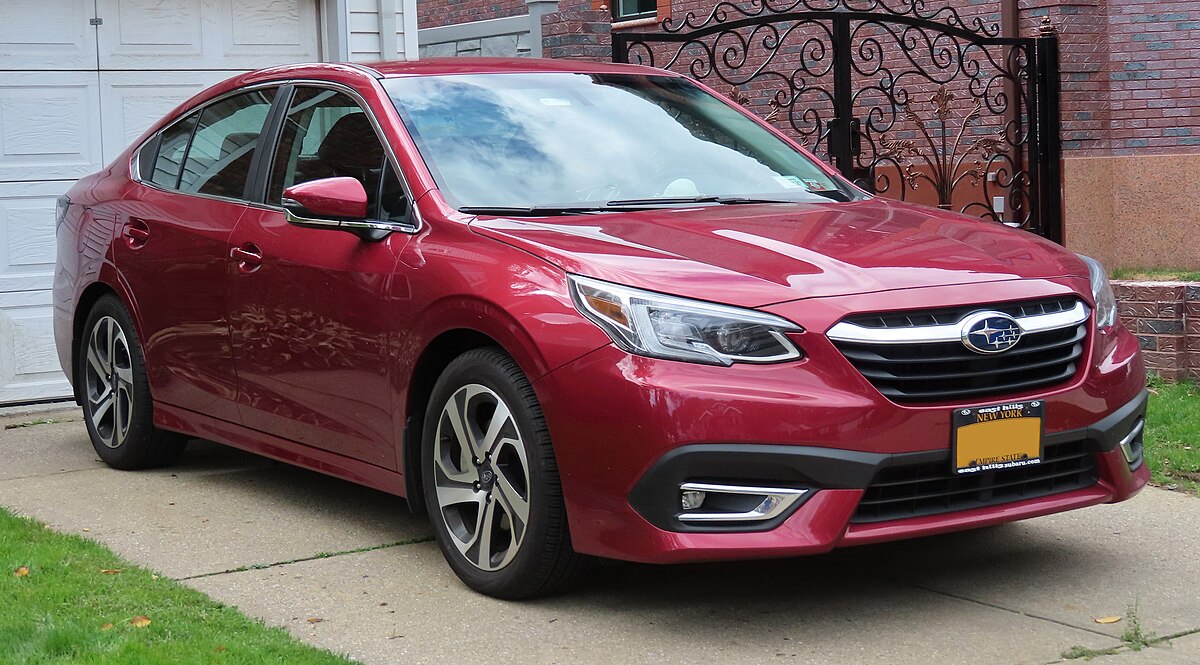
The all-wheel-drive systems in these vehicles contribute significantly to their longevity. Unlike more complex computer-controlled systems in competitors, Subaru’s symmetrical all-wheel-drive utilizes a relatively simple mechanical center differential or viscous coupling, providing exceptional traction with minimal components that can fail.
The manual transmissions available in these models are particularly robust, often outlasting the vehicles themselves.
The Legacy and Outback’s body structure represents another durability advantage. The vehicles utilize a ring-shaped reinforcement frame design that maintains structural integrity even after decades of use in harsh environments.
The use of thicker gauge steel than many competitors helps these vehicles resist the corrosion that typically limits vehicle lifespan in salt-belt regions, while the suspension design prioritizes durability over maximum comfort.
Maine resident Linda Gilbert documented over 800,000 miles on her 2005 Outback used for rural postal delivery before mechanical issues necessitated replacement, demonstrating the platform’s durability in extreme conditions.
Alaska tour guide operator Robert Bryant accumulated over 1 million miles on a 2006 Legacy wagon used for airport transfers in challenging Arctic conditions.
The Legacy/Outback’s million-mile potential is particularly impressive considering these vehicles are routinely exposed to harsh conditions that quickly deteriorate lesser designs a testament to Subaru’s engineering philosophy that values function and durability over cutting-edge features.
12. Dodge/RAM 2500/3500 (5.9L Cummins)
The Dodge (later RAM) 2500 and 3500 heavy-duty pickups equipped with the inline-six 5.9L Cummins diesel engine, particularly the 12-valve (1989-1998) and 24-valve (1998-2007) variants, have earned legendary status for their ability to exceed one million miles in commercial service.
These trucks represent a unique engineering partnership between Dodge and Cummins that created what many consider the most durable diesel pickup powertrain ever produced.
The 5.9L Cummins diesel’s extraordinary durability begins with its architecture as a medium-duty commercial engine adapted for pickup truck use. The inline-six configuration inherently produces less vibration than V8 competitors, reducing long-term fatigue on engine components and accessories.
The engine block features massive cylinder walls, seven main bearings supporting the forged steel crankshaft, and exceptionally robust connecting rods specifications more common in commercial trucks than consumer pickups.
The earliest 12-valve engines (1989-1998) represent the pinnacle of mechanical diesel simplicity, with fully mechanical direct injection systems requiring no electronic control.
These engines produce modest power by modern standards (160-215 horsepower depending on the year) but extraordinary torque, allowing them to operate at very low RPMs during normal use dramatically reducing internal wear compared to higher-revving engines. The mechanical injection pump design proved nearly indestructible, functioning reliably for hundreds of thousands of miles with minimal maintenance.
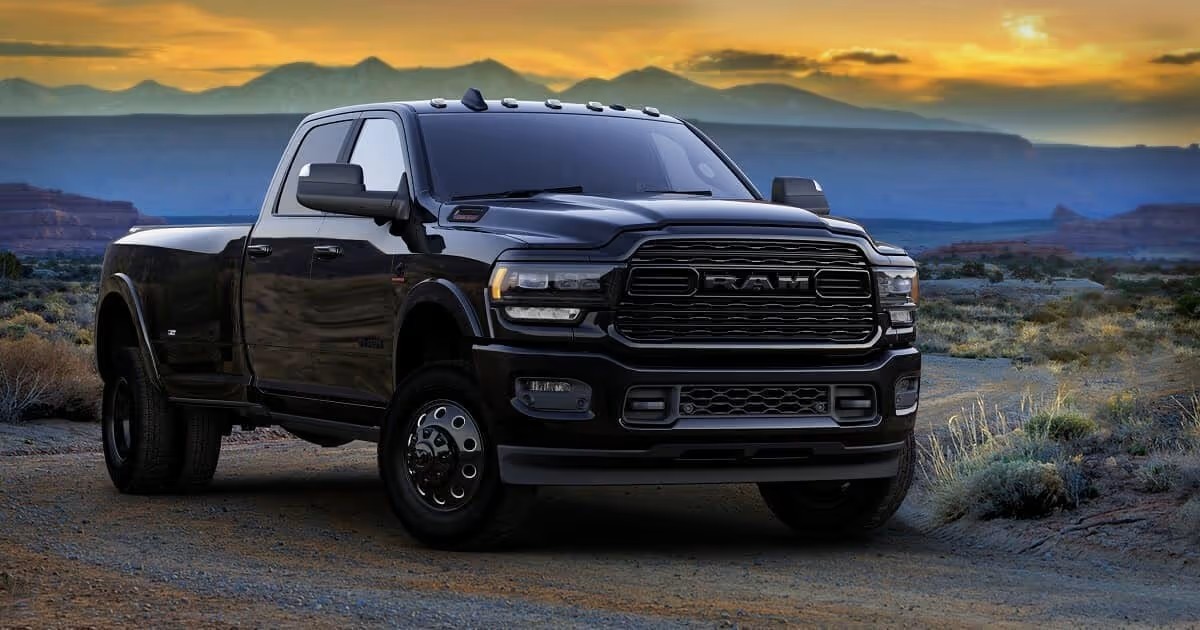
The later 24-valve engines (1998-2007) introduced electronic control while maintaining the fundamental durability of the platform. While the VP44 injection pump in 1998-2002 models proved somewhat problematic, 2003-2007 models with common-rail injection systems combined excellent reliability with improved performance and efficiency.
Throughout all generations, the absence of extensive emissions control hardware (compared to post-2007 diesels) significantly contributed to long-term reliability.
The manual transmissions paired with these engines, particularly the NV4500 and NV5600, have proven exceptionally durable, with many examples exceeding 500,000 miles without rebuilds when properly maintained.
While the automatic transmissions (particularly early models) represent a relatively weak point, properly maintained and moderately used automatics have still achieved impressive longevity.
North Dakota-based hotshot driver James Wisnewski documented over 1.5 million miles on a 1996 Dodge Ram 3500 with the 12-valve Cummins, requiring only regular maintenance and injector replacement.
Pennsylvania contractor Michael Garrison accumulated 1.3 million miles on a 2005 Dodge Ram 2500 with the common-rail 5.9L Cummins used for equipment transport.
The extremely active online community surrounding these engines has documented hundreds of examples exceeding 500,000 miles, with properly maintained trucks regularly achieving seven-figure mileage in commercial service establishing these vehicles as the benchmark for diesel pickup durability and longevity.

